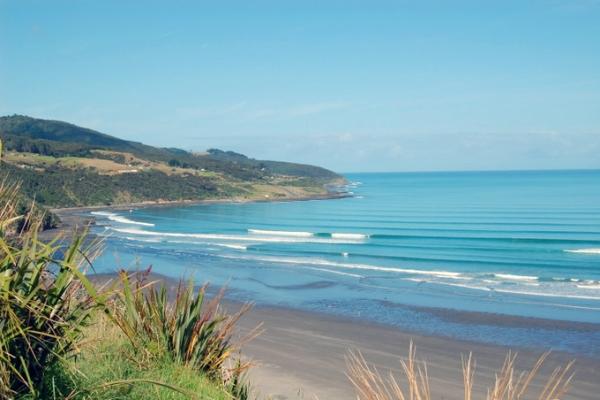Published on the 18/03/2016 | Written by Newsdesk

Sea, surf, beach and internet connectivity…
The country’s connectivity to the rest of the world is set to receive a much-needed boost with work scheduled to start on the Tasman Global Access (TGA) undersea cable in Raglan this month. Spark, Vodafone and Telstra are investing approximately USD $70 million to build the cable, which is expected to improve New Zealand’s international broadband connectivity while improving redundancy.
First announced in December 2014 with construction originally anticipated for early 2015, the project has been some time in the coming.
Both Spark and Vodafone said their trans-Tasman internet traffic has grown from just 10 percent of total international traffic in 2000, to 40-50 percent today. The companies said future international bandwidth requirements for New Zealand consumers and businesses are set to grow by 11,000 percent in the next decade.
The project is the first new cable to connect the country to Australia since Southern Cross (SX) was commissioned in 2000; prior to SX, Tasman2 which went live in 1992 handled all connectivity. The effect of new international bandwidth could be dramatic; in 2014, NZ Tech Blog noted that the typical unit pricing for international connectivity dropped 98.5 percent since the launch of SX. However, the website also notes that ‘The cost of international connectivity does not form a large part of the cost of internet to the average consumer’.
Alcatel-Lucent Submarine Networks (ASN), now part of Nokia, is laying the first TGA cable between Ngarunui Beach at Raglan and Narrabeen Beach in Australia.
In a joint statement, Spark GM wholesale and international Lindsay Cowley and Vodafone wholesale director Steve Rieger said the TGA cable is expected to start carrying data across the Tasman towards the end of 2016. “The first stage will see the crew of the MV Tranquil Image – a specially fitted out New Zealand vessel – bury a three kilometre stretch of fibre optic cable from Ngarunui Beach, through the surf zone and into the ocean.
“Once the Raglan shore landing works are complete, a larger ship will arrive in New Zealand to connect the next section of cable, taking it across the Tasman and eventually connecting it to the Narrabeen Beach landing in Australia.”
Telecoms User Association of NZ (TUANZ) CEO Craig Young said resilience is the real gain with the new cable, as most users don’t experience any obvious capacity limitations. “To be honest most users don’t see any real weakness as the capacity is constantly monitored by retail service providers and there is a significant amount of caching that takes place in NZ. [Capacity limitations] show up more for the larger organisations and research institutions which are looking for large dedicated pipes offshore and may not be able to get them on a commercial basis. End users will possibly see little difference, but it will provide a second and resilient path to Australia and Asia for internet traffic.”
Asked if the involvement of the usual big names in telecommunications meant the limited likelihood of competition to drive down prices, Young said this is one reason why he doesn’t believe users will see much difference. “However, it does introduce Vodafone as an owner of cable capacity which is new for them rather than leasing on SX; prices in NZ are based on Australian wholesale prices under the SX model.”
Young added that the TUANZ is hosting a discussion in early April on the need for further international capacity. “Our position is that since the business case for a further [trans-Tasman] cable has been difficult, what is the driving force for other cables?”
The cable laying activities at Ngarunui Beach are scheduled to commence on 29 March with the first stage expected to take about a week; this being New Zealand and the West Coast, weather conditions will play a part.
The 2,300km length of cable is comprised of two fibre pairs, and will have a total capacity of 20 terabits per second. By comparison, at launch the SX cable had a capacity of 20 gigabits per second, with subsequent upgrades over the years bringing its ‘capacity potential’ above 12 terabits per second.



























